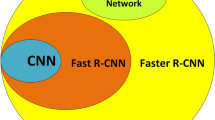Abstract
The overhead catenary system transfers the electrical power to the motor train unit. It is an indispensable system for guaranteeing the safe operation of high-speed railways. As a core component of the overhead catenary system, the insulators must be diagnosed periodically to ensure the safe operation of the overall railway system. However, existing deep learning-based insulator state diagnosis networks rely on the independent identically distributed assumption and fail to recognize the out-of-distributed insulator states. An improved insulator state classification algorithm based on smooth decision boundaries and distribution calibration is proposed in this paper. The decision boundary of the model is smoothed by learning the neighborhoods of the current insulators in the feature space through a linear mixing mechanism. The distribution of the out-of-distributed insulators is calibrated to a Gaussian distribution for evaluation. The classifier is adjusted to recognize the out-of-distributed insulator features under the few-shot assumption. The experimental results show that the algorithm proposed in this paper can effectively improve the recognition accuracy of the out-of-distribution insulators.




Similar content being viewed by others
Availability of data and materials
The datasets generated during and/or analyzed during the current study are available from the corresponding author upon reasonable request.
References
Qiupin, L., Jun, Y., Bendong, T., Liang, W., Siyao, F., Liwei, H.: An automatic eecognition and defect diagnosis model of transmission line insulator based on YOLOv2 network. Electr. Power 52(7), 31–39 (2019)
Tan, P., Li, X.F., Xu, J.M., Ma, J.E., Wang, F.J., Ding, J., Fang, Y.T., Ning, Y.: Catenary insulator defect detection based on contour features and gray similarity matching. J. Zhejiang Univ.-Sci. A 21(1), 64–73 (2020)
Li, T., Hao, T.: Damage detection of insulators in catenary based on deep learning and Zernike moment algorithms. Appl. Sci. 12(10), 5004 (2022)
Kang, G., Gao, S., Yu, L., Zhang, D.: Deep architecture for high-speed railway insulator surface defect detection: denoising autoencoder with multitask learning. IEEE Trans. Instrum. Meas. 68(8), 2679–2690 (2019)
Zhang, D., Gao, S., Yu, L., Kang, G., Wei, X., Zhan, D.: DefGAN: defect detection GANs with latent space pitting for high-speed railway insulator. IEEE Trans. Instrum. Meas. 70, 1–10 (2021)
Liu, W., Liu, Z., Wang, H., Han, Z.: An automated defect detection approach for catenary rod-insulator textured surfaces using unsupervised learning. IEEE Trans. Instrum. Meas. 69(10), 8411–8423 (2020)
Lyu, S.H., Wang, L., Zhou, Z.H.: Improving generalization of deep neural networks by leveraging margin distribution. Neural Netw. 151, 48–60 (2022)
Segu, M., Tonioni, A., Tombari, F.: Batch normalization embeddings for deep domain generalization. Pattern Recogn. 135, 109115 (2023)
Sakai, A., Sunagawa, T., Madan, S., Suzuki, K., Katoh, T., Kobashi, H., Pfister, H., Sinha, P., Boix, X., Sasaki, T.: Three approaches to facilitate invariant neurons and generalization to out-of-distribution orientations and illuminations. Neural Netw. 155, 119–143 (2022)
Zaid, M., Ali, S., Ali, M., Hussein, S., Saadia, A., Sultani, W.: Identifying out of distribution samples for skin cancer and malaria images. Biomed. Signal Process. Control 78, 103882 (2022)
Phan, H., Nguyen, A.: DeepFace-EMD: re-ranking using patch-wise earth mover's distance improves out-of-distribution face identification. In: IEEE Conference on Computer Vision and Pattern Recognition. IEEE, pp. 20259–20269 (2022)
Xie, Q., Dai, Z., Hovy, E., Luong, T., Le, Q.: Unsupervised data augmentation for consistency training. In: Advances in Neural Information Processing Systems, pp. 6256–6268 (2020)
Jung, A.B., Wada, K., Crall, J., et al.: imgaug. https://github.com/aleju/imgaug (2020)
Chapelle, O., Weston, J., Bottou, L., Vapnik, V.: Vicinal risk minimization. In: Advances in Neural Information Processing Systems, pp. 416–422 (2000)
Zhang, H., Cisse, M., Dauphin, Y.N., Lopez-Paz, D.: mixup: beyond empirical risk minimization. In: International Conference on Learning Representations (2018)
Miller, J.P., Taori, R., Raghunathan, A., Sagawa, S., Koh, P.W., Shankar, V., Liang, P., Carmon, Y., Schmidt, L.: Accuracy on the line: on the strong correlation between out-of-distribution and in-distribution generalization. In: International Conference on Machine Learning, pp. 7721–7735 (2021)
Ben-David, S., Blitzer, J., Crammer, K., Kulesza, A., Pereira, F., Vaughan, J.W.: A theory of learning from different domains. Mach. Learn. 79, 151–175 (2010)
Rodríguez, P., Laradji, I., Drouin, A., Lacoste, A.: Embedding propagation: smoother manifold for few-shot classification. In: Computer Vision—ECCV 2020, pp. 121–138
Li, G., Zheng, C., Su, B.: Transductive distribution calibration for few-shot learning. Neurocomputing 500, 604–615 (2022)
Tukey, J.W.: Exploratory data analysis. pp. 131–160 (1977)
Jin, W., Zhang, Z., Tang, P.: State identification classification network for catenary dropper based on improved wide residual structure. J. China Railw. Soc. 44(10), 40–45 (2022)
Wu, J., Jin, W., Tang, P.: Catenary pillar image anomaly detection combined with SVDD and CNN. Comput. Eng. Appl. 55(10), 193–198 (2019)
Funding
No funding was received for conducting this study.
Author information
Authors and Affiliations
Contributions
LL contributed to methodology, software, writing—original draft, and visualization. WJ contributed to conceptualization, writing—review and editing, and supervision. YH contributed to writing—review and editing. MBS contributed to writing—review and editing.
Corresponding author
Ethics declarations
Conflict of interest
The authors have no conflict of interest to declare that are relevant to the content of this article.
Ethical approval
Not applicable.
Additional information
Publisher's Note
Springer Nature remains neutral with regard to jurisdictional claims in published maps and institutional affiliations.
Rights and permissions
Springer Nature or its licensor (e.g. a society or other partner) holds exclusive rights to this article under a publishing agreement with the author(s) or other rightsholder(s); author self-archiving of the accepted manuscript version of this article is solely governed by the terms of such publishing agreement and applicable law.
About this article
Cite this article
Li, L., Jin, W., Huang, Y. et al. Insulator OOD state identification algorithm based on distribution calibration with smooth classification boundaries. SIViP 17, 3637–3645 (2023). https://doi.org/10.1007/s11760-023-02590-3
Received:
Revised:
Accepted:
Published:
Issue Date:
DOI: https://doi.org/10.1007/s11760-023-02590-3




